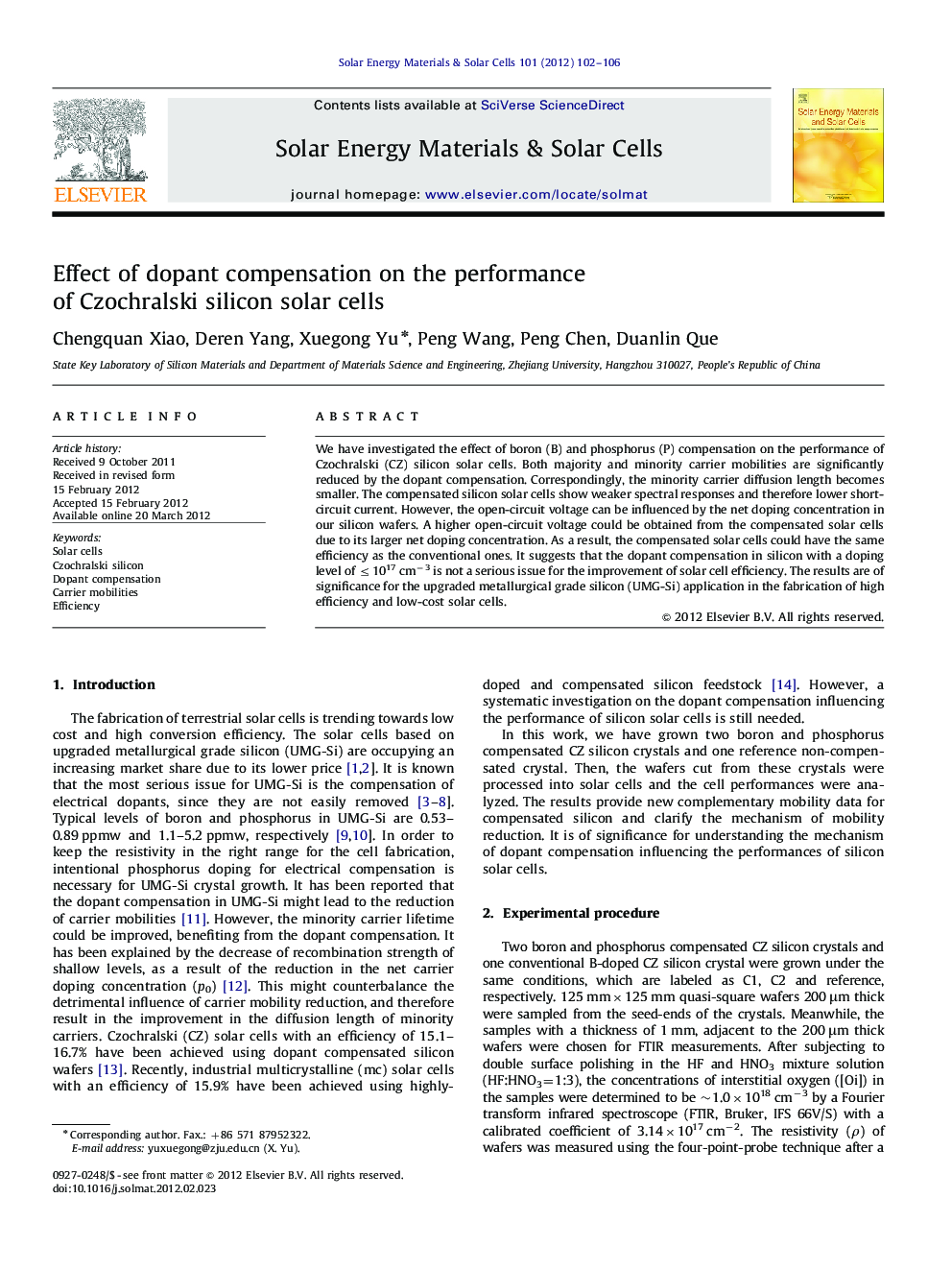| Article ID | Journal | Published Year | Pages | File Type |
|---|---|---|---|---|
| 79282 | Solar Energy Materials and Solar Cells | 2012 | 5 Pages |
We have investigated the effect of boron (B) and phosphorus (P) compensation on the performance of Czochralski (CZ) silicon solar cells. Both majority and minority carrier mobilities are significantly reduced by the dopant compensation. Correspondingly, the minority carrier diffusion length becomes smaller. The compensated silicon solar cells show weaker spectral responses and therefore lower short-circuit current. However, the open-circuit voltage can be influenced by the net doping concentration in our silicon wafers. A higher open-circuit voltage could be obtained from the compensated solar cells due to its larger net doping concentration. As a result, the compensated solar cells could have the same efficiency as the conventional ones. It suggests that the dopant compensation in silicon with a doping level of ≤1017 cm−3 is not a serious issue for the improvement of solar cell efficiency. The results are of significance for the upgraded metallurgical grade silicon (UMG-Si) application in the fabrication of high efficiency and low-cost solar cells.
► Compensated cells show weaker spectrum responses and lower short-circuit current. ► Compensated solar cells could have a higher open-circuit voltage. ► Compensated solar cells could have the same efficiency as do the conventional solar cells. ► Dopant compensation in silicon is not a serious issue for solar cell efficiency.
